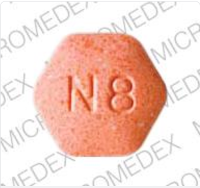 |
| Suboxone is less effective in treating some additions. (Drugs.com photo) |
Vermont's "Hub and Spoke" program is part of the statewide Blueprint for Health, with "hubs in relatively populous areas of this largely rural state," Sisk writes. "A patient enters the system for assessment and initial induction at one of nine hubs and then, once stable, is transferred to a spoke. If that patient relapses or needs more intensive care, they can be transferred back to the hub. The spokes typically offer Suboxone — the brand name for a combination of buprenorphine and naloxone -- and the most effective for those with mild to moderate opioid dependence — but not methadone, which is more regulated."
The mix of street drugs combined with their potency limits the impact of prescription care. "Suboxone has proved less effective against fentanyl, and commonly used doses can trigger violent, immediate withdrawal," Sisk explains. "Neither Suboxone nor methadone is designed to treat addiction to xylazine or stimulants. . . . The nation has also seen a significant increase in overdose deaths from co-use of stimulants and opioids."
Without effective prescriptions as part of a withdrawal plan, people with an addiction are less likely to succeed during the early days of recovery. "Those who seek help breaking their addictions face treatment options rendered less effective by the prevalence of fentanyl, xylazine, and other synthetic drugs," Sisk reports. "The Centers for Disease Control and Prevention estimates that of the more than 111,000 drug-overdose deaths in the U.S. in the 12-month period ending in April, more than 77,000 involved fentanyl and other synthetic opioids."
Jess Kirby, director of client services for Vermonters for Criminal Justice Reform, which offers services to counter substance use disorder, told Sisk: “There was a time when we couldn’t have pictured things being worse than heroin. Then, we couldn’t picture things being worse than fentanyl. Now, we can’t picture things being worse than xylazine. It keeps escalating. . . . We have a drug supply that’s contaminated with xylazine and fentanyl, and we know that people are struggling a lot more and are at a lot higher risk. It’s not just an overdose to be concerned about anymore. It’s life-threatening wounds and infections."
Tony Folland, clinical services manager with the Vermont Department of Health’s Division of Substance Use Programs, "said fentanyl is now implicated in about 96% of overdose deaths."
No comments:
Post a Comment